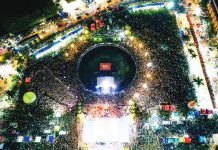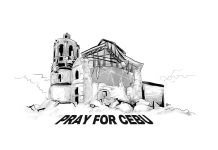
ILOILO did not sleep well last August.
While many were winding down with the usual café brews and TikTok reels, news broke that a teenager had been stabbed in Jaro Plaza, and a group of minors were caught exchanging punches at the ICC grounds like it was some post-curfew turf war.
It pulled me away from my quiet night and straight into every parent’s silent dread. Twenty-two were rounded up. Nineteen were minors. Kids—still figuring out algebra and hormones—had turned public spaces into battlegrounds. It was not just noise anymore. It was a plea, loud and alarming.
By Monday, City Hall was packed. Not with spectators, but with people who mattered—social workers, police, barangay heads, city councilors, even the parents of the minors involved. For once, it was not a scene of blame, but of urgency.
City Mayor Raisa Treñas made it clear: this is not about image control—it is about saving our kids before the headlines turn into eulogies.
Let us be clear. The rumble at ICC was not a one-time spectacle. It was part of a pattern we kept brushing aside. A few months ago, two minors stabbed a third in Molo. Last year, 149 young people in Iloilo City alone were officially recorded in conflict with the law. That does not even count the unreported fights at sari-sari store corners or the quiet back alleys where teenagers try to settle scores like they are in an action film. These are not rumors. They are data-backed cries for help.
Some ask, is this gang culture creeping in? Or just boys being boys, magnified by social media and poor impulse control?
In truth, it does not matter if they call it a barkada or a “group chat war.” What we are dealing with are real tensions—bravado looking for a stage, identity looking for a shape. They may not wear matching jackets or have hand signs, but the loyalty, the danger, the need to belong—they are real and brewing.
What hurts more is the quiet distance between our young people and their adults, the supposed “more knowledgeable others.” Somewhere along the way, our conversations became commands, and our guidance turned into threats.
Many parents, exhausted from work and overwhelmed by life, assume their children are “just moody” or “just growing up.” But often, the ones who rumble are not rebels. They are unheard, uncertain, and unsure of who to trust. And when nobody listens, fists speak.
Worse, some of the loudest models our kids see are not even in gangs—they wear barongs and hold microphones. They shout in press cons, curse in sessions, and threaten like it is leadership. Some flaunt misogyny, joke like chauvinists, and wear their “utak pulbura” mindset like a badge of honor.
This doublespeak—where bullying is framed as bravery—teaches the young that loudness wins, cruelty leads, and fear demands respect. No wonder fists now speak faster than reason. The street rumbles just echo the ones they see onstage.
Mayor Treñas said it right: “We cannot wait until someone is killed.”
The City’s response has been swift—curfews tightened, lectures in big campuses resumed, and police visibility increased. But even the presence of uniforms cannot replace the presence of mentors.
Prevention lives in barangay sports leagues, in community art workshops, in churches that open more than just pews, in schools that notice silence as much as recitation, and in dinner tables where kids are not just asked if they finished homework, but if they are okay.
There are councilors proposing curfew monitoring not as a threat, but as a chance. To catch a kid before a gang does. To talk before trouble escalates. To say: “We noticed you. We care.” I believe this is where many public policies fall short. They measure success by how many are arrested—not by how many never needed to be.
Having worked in schools and talked to countless students, I can tell you this—most young people do not want chaos. They want clarity. They want to matter. Some of them act tough, but scratch the surface and you find someone looking for a safe space, not a fight. And if their school or home does not offer that space, they will build it elsewhere—often with bad company.
This is where community comes in. Real community. Not the kind that blames from afar or reacts only when trending. But neighbors who know names. Barangays that hold weekend basketball, not just barangay hall meetings. Police who show up even when there is no trouble, just to ask, “Kamusta kamo?” Teachers who check in not just on grades, but on grief. Guidance counselors who know their students’ birthdays, not just their files.
Because what is at stake is not just a news cycle or public order—it is the fabric of a generation. If we let the next stabbing be the moment we act, then we are already too late. But if we gather, intervene, and listen now, then maybe, just maybe, we turn these headlines into hope. We turn rumbles into reminders. And noise into direction./PN







